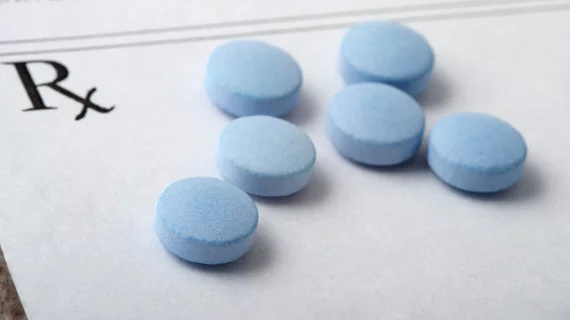The use of hydroxychloroquine and chloroquine as potential COVID-19 treatments has been one of the pandemic’s biggest stories, with some studies revealing promise and others offering reasons for concern. According to new findings published in JAMA, prescription fills for hydroxychloroquine and chloroquine jumped significantly in the United States as a result of this ongoing dialogue—though the numbers did drop back down by late April.
The study’s authors tracked prescription patterns related to hydroxychloroquine, chloroquine and other medications impacted by the pandemic, drawing data from more than 58,000 pharmacies across all 50 states. Figures from Feb. 16 to April 25, 2020, were compared with figures from those same dates in 2019.
Overall, the team found that prescriptions for hydroxychloroquine/chloroquine, azithromycin, losartan and lisinopril all peaked from March 15 to March 21, 2020. Azithromycin and lisinopril quickly dropped below 2019’s numbers, and losartan was approximately even with 2019’s numbers by the end of April.
Looking specifically at hydroxychloroquine/chloroquine during that week from March 15 to March 21, the researchers noted that prescriptions were up 1,977% for fills of fewer than 28 tablets. Prescriptions were also up 179% for fills of 28 to 60 tablets and 182.1% for fills of more than 60 tablets. By the end of the study, fills of fewer than 28 tablets were still up 848.4%, fills of 28 to 60 tablets were up 53.3% and fills of more than 60 tablets were actually down 64%.
“These data demonstrated a surge in hydroxychloroquine/chloroquine prescription fills, likely due to off-label prescriptions for COVID-19,” wrote lead author Muthiah Vaduganathan, MD, MPH, Brigham and Women’s Hospital in Boston. “The growth observed in the week of March 15 to March 21 followed the World Health Organization declaring a global pandemic on March 11, the United States declaring a national emergency on March 13, a single-group nonrandomized study published on March 17 and President Trump’s support of the drug on March 19. This surge in prescriptions corresponds to a previously reported spike in internet searches for purchasing hydroxychloroquine/chloroquine.”
That significant drop in longer-term prescription fills, the authors added, line up with shortages reported by the FDA.

